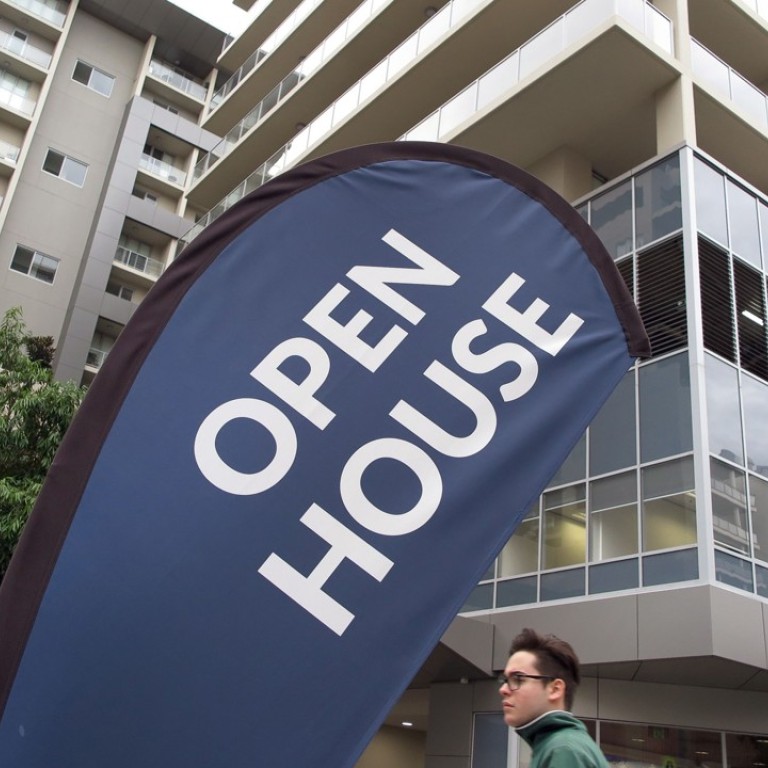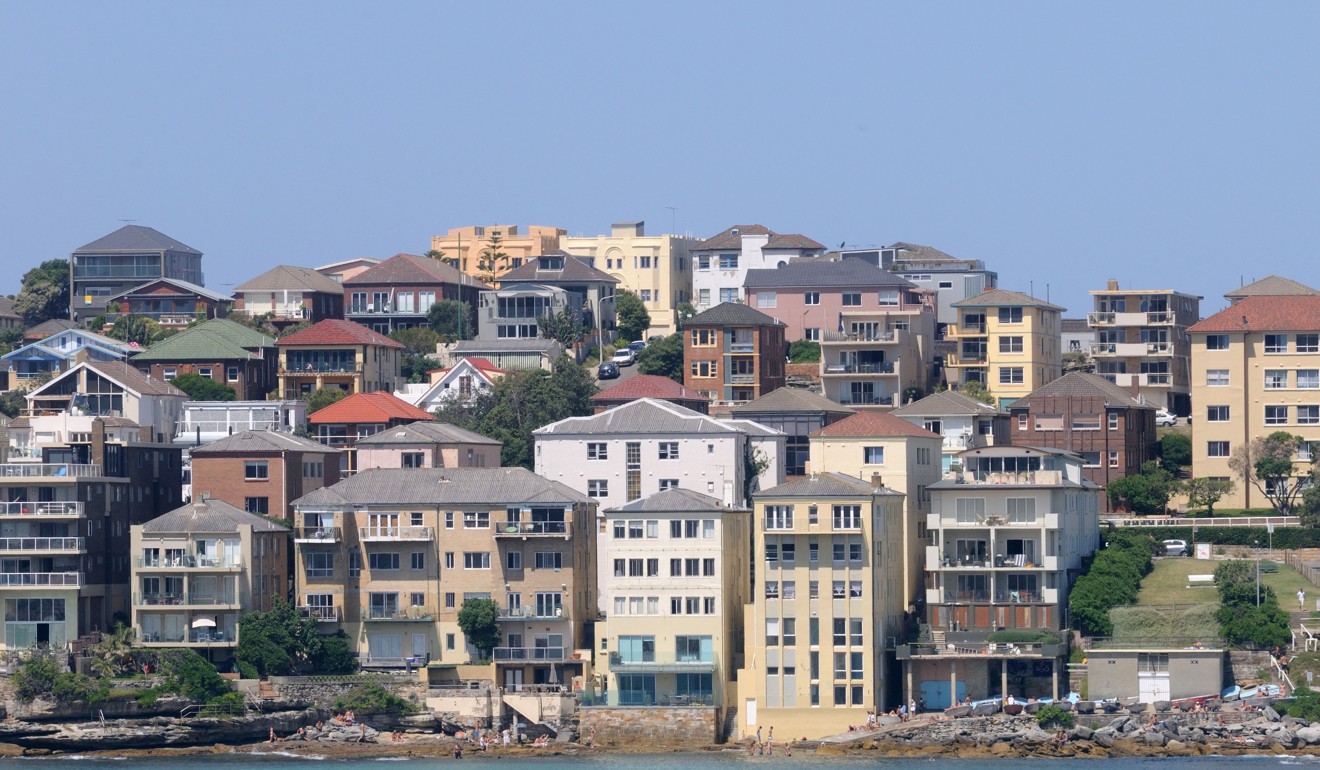
Buyers on a bargain hunt as Australia’s housing market keeps sliding
Prices across Australia fall for 11th month in a row – bad news for investors, but first-home buyers are biding their time
Five years ago banks were “falling over each other” to give out loans, says Sydney-based IT executive Karl Sice, who bought his first investment property 15 years ago. He currently has six properties in his portfolio across Sydney, Melbourne, and northern Queensland.
But after roughly six years of uninterrupted, breakneck growth, Australia’s house prices are falling, and the noises from the lenders have changed. The difference between now and five years ago, Sice says, is like “chalk and cheese”.
Sydney and Melbourne, the twin engines of Australia’s house price boom, are finally spluttering – thanks mostly to financial regulator Apra’s tightening of lending and the fallout from the banking royal commission.
Across Australia, prices have fallen for 11 months in a row. In Sydney, they are down 5.6 per cent over the year, and in Melbourne, they are down 2 per cent in the past three months – the worst drop since Christmas 2011. It wasn’t too long ago that prices surged 11 per cent in one year nationally and 20 per cent in Sydney.
And while it may not be a crash, it seems set to be a long slide. This week, Capital Economics predicted the coming fall would be the “longest and deepest” housing slump in Australia’s modern history.

But while it is bad news for Sice and his fellow investors, it is good news for hopefuls trying to buy their first home. Where once the market was driven upwards by buyers’ fear of missing out, now they can afford to wait and see.
Rhi, who lives in the Illawarra region of New South Wales, south of Sydney, works in construction. She says she plans on biding her time and “snapping up” her first home when the market hits rock bottom.
“We are getting married in October and then we’ve got our honeymoon. This time next year is when we were hoping to get our first house. But if it keeps falling then we’ll hold off to see what happens.
“I’m hopeful. The banking royal commission seems to be tightening rules, and people with interest-only loans can’t refinance and potentially, that could compound on the baby boomers where they have to give up their investment properties.
“A lot of millennials don’t want investment properties, we just want a place to live without a landlord.”
It’s not a credit crunch, it’s a credit squeeze. It’s mainly investors who are being affected, your average homebuyer has seen a marginal impact on how much they can borrow
According to analysts, the fall in house prices is the direct result of new stricter lending standards introduced by the financial regulator Apra in March, and the work of the banking royal commission in exposing the banks’ lax lending standards.
Apra placed a cap on mortgage lenders, limiting the number of risky interest-only loans to only 30 per cent of new mortgages. By April, the value of housing loans fell by 1.6 per cent across the country. Banks were also ordered to make much more rigorous checks on borrowers’ income and expenses to make sure they could afford the loans.
Pete Wargent, a property analyst and coach, says the new rules have affected mostly investors and speculators, taking the sting out of the overheated market.
“It’s not a credit crunch, it’s a credit squeeze,” he says. “It’s mainly investors who are being affected, your average homebuyer has seen a marginal impact on how much they can borrow.
“A lot of investors took out interest-only loans in that period of 2014-15 and they’re going to find rolling those over to new interest-only loans will be harder than they think. It’s been a gradual deflation and that was what was intended.”

Prices and clearance rates have dropped since then, with August’s national clearance rate barely above 50 per cent. Shane Oliver, AMP Capital’s chief economist, said that the “fomo” (fear of missing out) that had driven investors into the booming market, was now turning to “fongo” (fear of not getting out) as prices tumble.
Last month, data from Digital Finance Analytics revealed that Apra’s changes appeared to be biting as the number of people whose applications to refinance their home loan were rejected, surged 1,250 per cent in less than a year. In July, 31,000 refinance applications were rejected, compared to only 2,300 in August last year.
On top of the new lending rules, Cameron Kushner, a senior analyst at CoreLogic, says the drop was also the natural consequence of a market that people could not afford.
“Once it does hit bottom it’s going to be a slow recovery to those previous levels in Sydney and Melbourne,” he said. “My biggest piece of advice is that the housing market is not where it was 12 months ago. It has changed very rapidly. There are fewer buyers and they can’t borrow as much – you need to adjust your price expectations accordingly.”
Once it does hit bottom it’s going to be a slow recovery to those previous levels in Sydney and Melbourne. My biggest piece of advice is that the housing market is not where it was 12 months ago. It has changed very rapidly. There are fewer buyers and they can’t borrow as much – you need to adjust your price expectations accordingly
In Melbourne, prices peaked in November and have been falling ever since. For buyers’ advocate Frank Valentic, it’s a good thing.
“Overall, the market has definitely shifted here,” he says. “We’ve had a sellers’ market for six year... It’s good that the market is now offering some opportunities for buyers to get better buying opportunities.”
But Valentic points to a “segmented” market where price growth in the outer suburbs – mostly homes worth up to A$750,000 (US$534,000) – is “still very solid”.
“It’s been more the inner suburbs, your one-million-plus market, that’s definitely seen a slowing effect,” he says.
That slowing effect is not just applied to house prices: a broad downturn in the market would also affect Australia’s huge construction industry, with a knock-on effect on the country’s economy.
While most of the losses are concentrated in Sydney and Melbourne, those two cities make up 40 per cent of Australia’s housing stock by number, and 60 per cent of the housing market by value.
As a result, BIS Oxford Economics has predicted that new housing starts will fall by 23 per cent by 2020, in what will be the biggest correction to the market since the global financial crisis.
Its associate director Adrian Hart told broadcaster ABC that construction could flip from being “a driver of strong growth” to “a drag on the economy”.
Wargent agrees, and predicts that the construction slump will be “a hard fall”.
“The share of construction as a percentage of the labour force is the highest it’s been in 100 years. It increased sharply through the early years of the mining boom, then we have seen a handoff to the housing construction boom.
“It should be a hard fall. It’s a well known dynamic that housing construction has a multiplier effect – essentially of $3 per $1 – so the corollary of that is, if it goes into reverse it will have a contracting effect on the economy.”
This puts Rhi in an odd position, as someone whose job is tied to the housing industry, but who also wants a cheap first home.
But she is optimistic, both that there won’t be a big crash, and that she could diversify her job enough to not be affected.
“I might take a hit in the amount of work I get, but I think I will be able to survive something like what happened in 2008,” she says.

